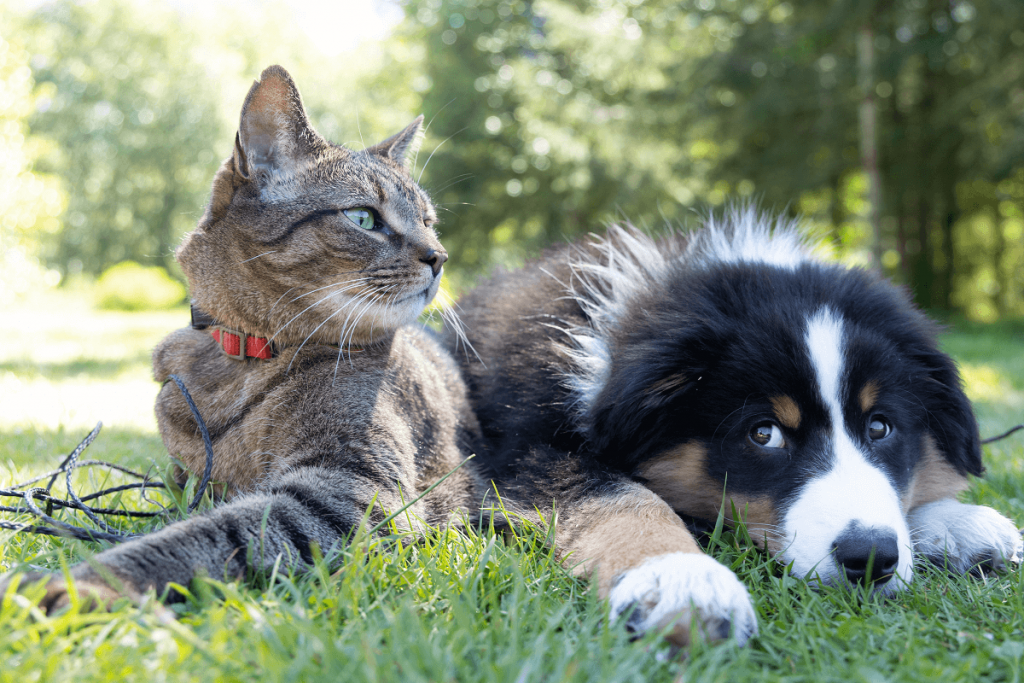While having surgery performed on your precious pet may seem a little confronting at first, desexing is a very common and safe procedure, with minimal risks involved.
In South Australia, desexing is compulsory for all cats and dogs born after 1 July 2018 – either by the age of six months or within 28 days of taking possession of your new pet. There are a few exceptions to this law, including animals registered for breeding, working dogs and a small number of approved medical reasons.
Read on to find out everything you need to know about desexing your pet.
Benefits of desexing your pet
Desexing your cat or dog prevents unwanted pregnancies, but also offers many benefits for both male and female pets.
Desexing male pets
Neutering male pets offers a number of health and behavioural benefits, including:
- Reduced risk of prostatic diseases and perianal tumours
- Eliminates testicular cancer
- Reduced tendency to roam – which means fewer fights and accidents
- Reduced aggression – they won’t feel the need to defend their territory
- Less likely to urinate inappropriately around the house
Desexing female pets
When a female cat or dog is desexed (also known as spaying), their risk of developing a number of serious health issues is significantly reduced.
- Eliminates ovarian and uterine cancers
- Reduced risk of mammary tumours
- Prevents severe uterine infections
When should my pet be desexed?

While it is recommended that most dogs and cats be desexed between 4-6 months of age, this can vary depending on their sex and breed.
For cats, it is best to have your cat desexed before they have reached a fertile age (typically when they are 4-5 months old) to avoid any early unwanted pregnancies.
For dogs, larger breeds may need to wait a little longer to achieve their full bone growth before being desexed.
Your vet will discuss their recommendations for desexing your dog or cat so you can make a decision together on the most appropriate time.
What does the desexing procedure involve?
Desexing is a surgical day procedure performed under general anaesthetic. When you book your pet in for desexing we will provide you with comprehensive advice on how to prepare your cat or dog for the procedure, as well as aftercare instructions.
Preparing for surgery
Prior to their procedure, your dog or cat will need to fast overnight before being brought to the clinic the morning of the procedure. Once your pet has been admitted, we will perform a thorough examination to ensure they are fit and ready to be placed under anaesthetic.
The desexing procedure
For female pets, the ovaries and the uterus are removed through a small incision in the middle of their belly. For male pets, desexing is a quicker procedure which involves the removal of the testicles via an incision in the front of the scrotum.
Following surgery, your pet will be kept for a number of hours for close observation by our nursing staff and provided with necessary pain relief.
After surgery
In most cases, your pet will be able to return home later the same day. You will need to keep your cat or dog quiet and separated from other pets to ensure their wound heals properly. We will schedule a follow-up appointment in 10-14 days to check on their wound and remove any non-dissolvable sutures.
Still have questions about desexing your pet?
We understand that having your beloved pet undergo surgery can be worrying.
At Cameron Veterinary Services, our highly qualified veterinarians have completed countless desexing procedures and are happy to answer any questions or concerns you may have about the surgery.
You can contact our Gawler East clinic on 08 8318 1801.

